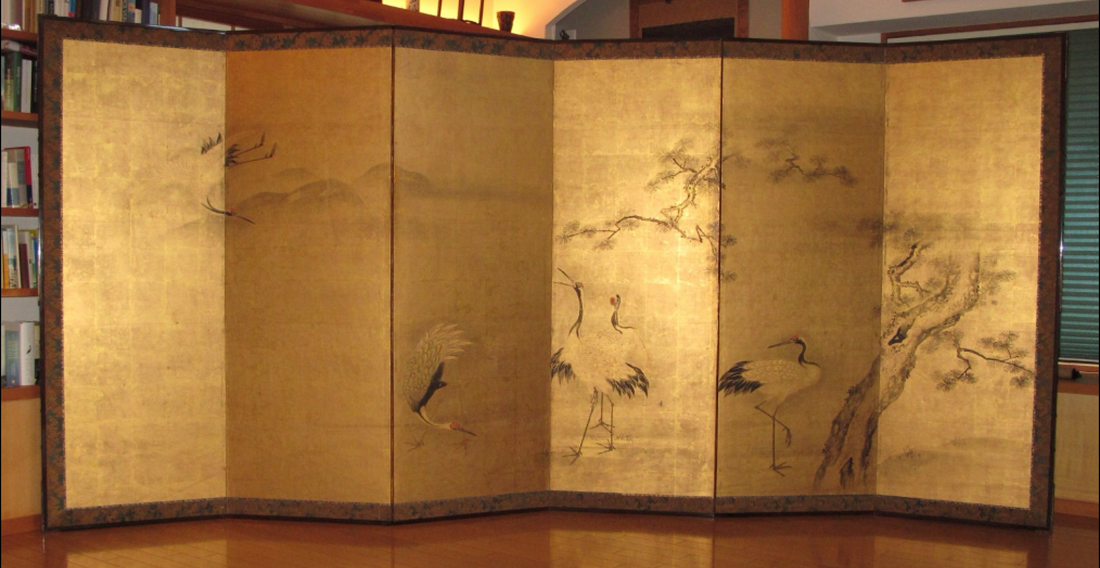Cranes and pines are symbols of good luck – the crane (often combined with the turtle) is a symbol of long life. The evergreen gnarled pine is a symbol of constancy and resilience. Both motifs can be found throughout Asia with this meaning.
What is special about this screen is the lively depiction of the cranes. They are not just abstract symbols, but individuals with feelings and relationships to one another. The crane on the far left turns its head back to the right because another crane is calling to it. This is a "conversational connection". The second crane from the left bends down - is it bowing to the calling crane? The group of two cranes, one can interpret, consists of a male that is calling and a female that is preening its plumage (making itself beautiful, as females tend to do). Is there then a son to the right, the fifth crane, who will soon be an adult? He is also looking to the left at the calling father. With these turns of the birds' heads towards the "calling father", the screen image is centered in terms of content.
The shape of the pine tree fulfils a formally important function - it closes off the picture on the right with its trunk and reaches with a branch, like a canopy, to the calling crane in the middle. The crane family has a house, a roof; it is protected.
Such a family interpretation of a group of cranes is very plausible in the Edo period (1603-1867). In earlier symbolic paintings of this kind, the symbol bearers are usually more abstract. From the 17th century onwards, Confucianism becomes the dominant ideology. It defines family structures very clearly and ultimately inflexibly. Every individual has a clearly defined place in the family and - at a higher level - also in the community of the state.
The screen is not signed, which is almost the norm at this time. Stylistically, the painting can be attributed to the Kanō school.
Dimensions: 64cm (x6) x 177cm (total width: approx. 390cm) | Material: Paper 6-fold screen (ink on gold background)

